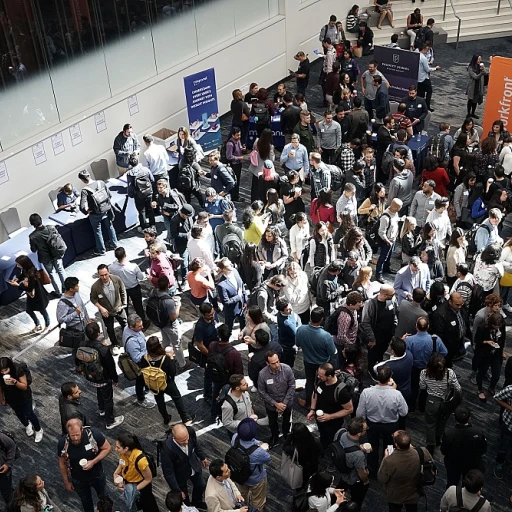
Defining Adverse Impact in the Context of Skills Gap
Exploring Adverse Impact Within Skills Gaps
Understanding the notion of adverse impact is essential when confronted with the broader issue of skills gaps in the labor market. Originally stemming from employment and anti-discrimination laws, adverse impact refers to policies or practices that, while seemingly neutral, disproportionately affect protected groups under Title VII of the Civil Rights Act. Within the context of skills gaps, adverse impact can manifest in various stages of the employment process, from job descriptions and selection procedures to hiring practices. Employers must conduct a thorough impact analysis to identify any disparities in selection rates among different demographic groups, such as those based on race, gender, or age, which could hint at unintentional exclusion or bias. Moreover, disparate impact—though differing slightly from adverse impact—emphasizes the unintentional nature of these inequities that arise not from overt discrimination, but from systemic factors like inadequate management practices or flawed job analysis. As employers navigate these challenges, understanding adverse impact can help in making informed decisions aimed at fostering diversity and inclusivity. By recognizing the prevalence of adverse impact in skills-based assessments and employment tests, organizations can refine their selection criteria and procedures to ensure compliance with the uniform guidelines on employee selection procedures. This not only aligns with legal standards but also enhances organizational performance by embracing a diverse workforce. To delve deeper into how skills gaps contribute to adverse impacts and strategies to mitigate them, consider exploring additional insights from a comprehensive skill survey, shedding light on how adaptations in hiring and training can bridge these divides.Identifying the Causes of Adverse Impact
Analyzing the Roots of Adverse Impact in Employment
Understanding what triggers adverse impact in the skills gap requires a comprehensive examination of employment practices and the broader socio-economic landscape. Several factors contribute to disparate outcomes in hiring and employment, often affecting protected groups under the Title VII Civil Rights Act. One primary cause stems from selection procedures that inadvertently emphasize certain skills while neglecting others. Job descriptions and performance tests often require a level of skill that is not uniformly accessible across all demographic groups, contributing to a disparate impact. Additionally, the historical context of these job descriptions, influenced by past hiring practices, often fails to account for the dynamic shifts happening in today's labor market. Moreover, employment tests and tests used for job selection tend to be designed with the outcome of hiring efficiency in mind, but not always with fairness. The result can be selection rates that do not reflect the available pool of diverse talent. This is where the notion of business necessity and uniform guidelines for selection procedures needs to be rigorously applied to mitigate adverse effects. Management decisions such as executive orders can also unwittingly pave the way for adverse impacts when they overlook the importance of skills-based hiring. Policies need to recognize skills discrepancies and address them through equitable hiring practices. For more insights into how market dynamics influence these factors, you may want to read about the ever-changing marketplace and its implications for the skills gap. To navigate these challenges, employers need to utilize impact analysis techniques to ensure that their practices are aligned with anti-discrimination laws. The fifths rule, for instance, provides a benchmark for evaluating disparate impact by comparing selection rates among different groups. In essence, regularly analyzing hiring decisions through the lens of civil rights and adjusting management strategies is crucial for creating a level playing field in employment.The Role of Technology in Exacerbating or Mitigating Adverse Impact
The Growing Influence of Technology on Employment Processes
In recent years, technology has become a double-edged sword in the context of skills gap and adverse impact. On one hand, technological advancements have the potential to mitigate adverse impact by providing uniform systems for job analysis and selection procedures. By utilizing standardized employment tests and automated hiring tools, employers can reduce disparate impact by eliminating human bias from decision-making processes.
However, this reliance on technology can also exacerbate issues of adverse impact if not managed carefully. Systems that are not properly calibrated to accommodate diverse candidate pools may inadvertently favor certain groups over others. This could lead to unintended consequences in selection rates, contravening Title VII civil rights mandates and the Uniform Guidelines on Employee Selection Procedures. Employers must conduct a thorough impact analysis to ensure that their technological systems support fair employment practices and do not result in disparate impact.
The legal considerations surrounding technology in hiring processes, such as the fifths rule, require employers to engage in ongoing skills-based management. Protecting against adverse impact in this context is not merely a legal obligation but a business necessity. This is particularly important for complying with anti-discrimination laws and executive orders aimed at maintaining equitable employment opportunities across protected groups.
Strategies for Employers to Address Adverse Impact
Implementing Effective Strategies for Employers
To address the issue of adverse impact in the skills gap, employers must develop and implement effective strategies that mitigate disparate impact in their hiring and selection processes. In this context, it's crucial to examine the mechanisms that contribute to adverse impact and create comprehensive plans to reduce it.
Employers should start by conducting an impact analysis of their current selection procedures. This involves examining the disparate impact on protected groups by reviewing key metrics, such as selection rates and employment tests. This analysis helps in identifying patterns or disparities that may not align with civil rights or anti-discrimination standards.
- Review Job Descriptions and Analyses: Ensure that job descriptions properly reflect the skills required for the position. Conducting a thorough job analysis can help employers align their hiring needs with specific skill sets, reducing the risk of adverse decisions.
- Compliance with Uniform Guidelines: Adhering to the uniform guidelines on employee selection procedures can help employers maintain alignment with civil rights laws, particularly Title VII. This alignment ensures that all selection processes follow legal standards that promote equal opportunity.
- Utilize Skills-Based Hiring Practices: Transitioning to skills-based hiring practices can facilitate fairer selection processes, focusing on the competencies required rather than unrelated qualifications.
- Leverage Technology Wisely: Use technology, such as applicant tracking systems, judiciously to support objective analysis and evaluation, minimizing biases during the hiring process.
- Engage in Continuous Monitoring and Adjustment: Regularly review and adjust policies and procedures to adapt to evolving legal frameworks, ensuring that the employer's practices remain fair and effective.
Finally, it is imperative for employers to foster a culture of lifelong learning. Encouraging employees to engage in ongoing training and development not only enhances their performance but also aligns with the business necessity of adapting to changing market demands. This holistic approach to combating adverse impact demonstrates a commitment to fairness while also enabling organizational growth and adaptation.
The Importance of Lifelong Learning in Reducing Adverse Impact
The Link Between Continuous Learning and Minimizing Adverse Impact
The significance of lifelong learning cannot be overstated when it comes to reducing adverse impact in the skills gap. As employers strive to navigate complex hiring processes and ensure fairness in selection procedures, emphasizing continuous learning offers a proactive approach to addressing these challenges. Considering the rapidly evolving job market, employees and job seekers alike must commit to refining their skills continually. This commitment helps bridge disparate impact disparities arising from conventional hiring practices. Engaging in lifelong learning equips individuals with the capacity to adapt to changing job descriptions and selection tests, which may otherwise contribute to adverse impacts. Employers implementing skills-based training programs can directly impact performance and mitigate potential gaps inadvertently created during the hiring decision-making process. Furthermore, companies can foster a culture of learning by:- Encouraging participation in relevant training courses and workshops.
- Offering mentorship programs to enhance skillsets effectively.
- Promoting an open environment for knowledge sharing across all teams and departments.
Policy Recommendations to Combat Adverse Impact
Crafting Policies to Address Adverse Impact in the Workforce
To effectively tackle adverse impact in employment settings, it's vital to consider policy-level interventions. These recommendations aim to assist employers and policymakers in fostering equal opportunities for all, thus bridging the skills gap.- Promote Transparent Hiring Practices: Encourage transparency in hiring practices and establish clear, skills-based job descriptions that align with business necessities. This helps ensure that the selection process is fair and unbiased, minimizing disparate impact on protected groups.
- Adhere to Uniform Guidelines: Employers should strictly follow established guidelines, such as the Uniform Guidelines on Employee Selection Procedures. These provide a framework to avoid adverse impact by applying consistent standards across similar job classifications.
- Implement Impact Analysis: Conduct regular impact analyses to evaluate the effects of selection rates and procedures on different demographic groups. This can help identify any unintended disparate impact and prompt necessary adjustments.
- Strengthen Anti-Discrimination Policies: Reinforce Title VII of the Civil Rights Act and other anti-discrimination laws through rigorous enforcement. This ensures that all hiring decisions and job tests comply with legal standards, reducing the possibility of adverse impact.
- Use Technology Wisely: While technology can both exacerbate or mitigate adverse impact, its proper utilization, guided by evidence-based analysis, can enhance equitable hiring practices and support skills-based selection systems.
- Foster Lifelong Learning Initiatives: Encourage continued education and training programs, promoting lifelong learning as a way to adapt to market changes and reduce skill deficiencies.












